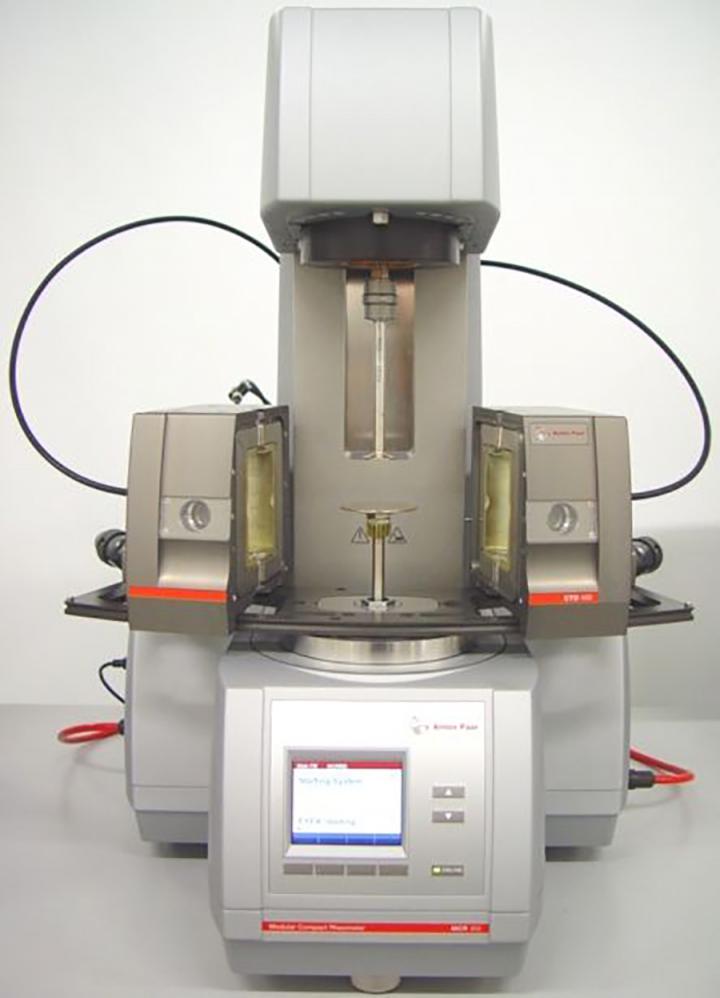Principle
Rheology is the branch of science that deals with the flow of matter mainly liquids and in some cases solids and soft solids as well. This branch generally takes into account the conditions under which these elements of matter flow freely without any kind of hindrance or obstruction. Rheology is a widely accepted and recognized branch of study which is applicable to substances such as polymers, suspension liquids among others which have a complicated structure.
A rotational rheometer is used to determine how a liquid or slurry flows.
Testing procedure
The material is molten between two plates. The temperature depends on the material. The upper plate starts to rotate or oscillate at a varying frequency or speed. The forces applied are measured. From these data a viscosity curve is retrieved in the lower shear rate area.
Two possible setups:
- Plate -plate geometry
- Cone - plate geometry
Testing applications
- Material characterisation
- Viscosity curve in the lower shear rate area
- Determination of:
- Molecular weight distribution
- The tackiness (adhesion of layers)
- The extensional viscosity and melt strength
- The dynamic-thermal properties in torsion
Leaflet
Send your samples to
Centexbel-VKC
Etienne Sabbelaan 49
8500 Kortrijk
Belgium
+32 56 29 27 00
info@vkc.be




